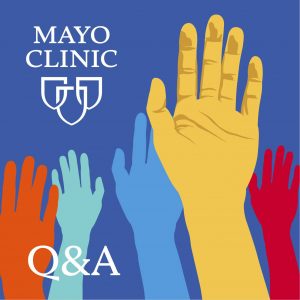-
Neurosciences
Mayo Clinic Q&A podcast: Seizure forecasting device could help patients with epilepsy anticipate seizures, take action

Despite treatments that include medications, surgery and neurostimulation devices, many people with epilepsy continue to have seizures. And the uncertainty of when a seizure could occur affects their quality of life.
But what if these people could anticipate a seizure and take action? A recent Mayo Clinic study tested a technology to do just that.
"One of the most disabling aspects of seizures is the unpredictability," says Dr. Benjamin Brinkmann, a Mayo Clinic epilepsy scientist.
The study found patterns could be identified in patients who wore a special wristwatch, allowing about 30 minutes of warning before a seizure occurred. This worked well most of the time for five of six patients studied.
The next step is a larger research study and collecting more data.
"We are putting in for funding to do a larger study and we will spend some time and effort improving our algorithms," says Dr. Brinkmann. "One of the things in this new era that we live in with AI (artificial intelligence) and machine learning is that data is king. We really need to collect lots of data so we can train our algorithms to find these subtle signals."
On the Mayo Clinic Q&A podcast, Dr. Brinkmann discusses how seizure forecasting might help patients in the future.
Watch: Dr. Brinkmann discuss epilepsy research.
For everyone's safety, Mayo Clinic has strict masking policies in place. Anyone shown without a mask was recorded prior to COVID-19 or recorded in an area not designated for patient care, where social distancing and other safety protocols were followed.
For more information and all your COVID-19 coverage, go to the Mayo Clinic News Network and mayoclinic.org.








